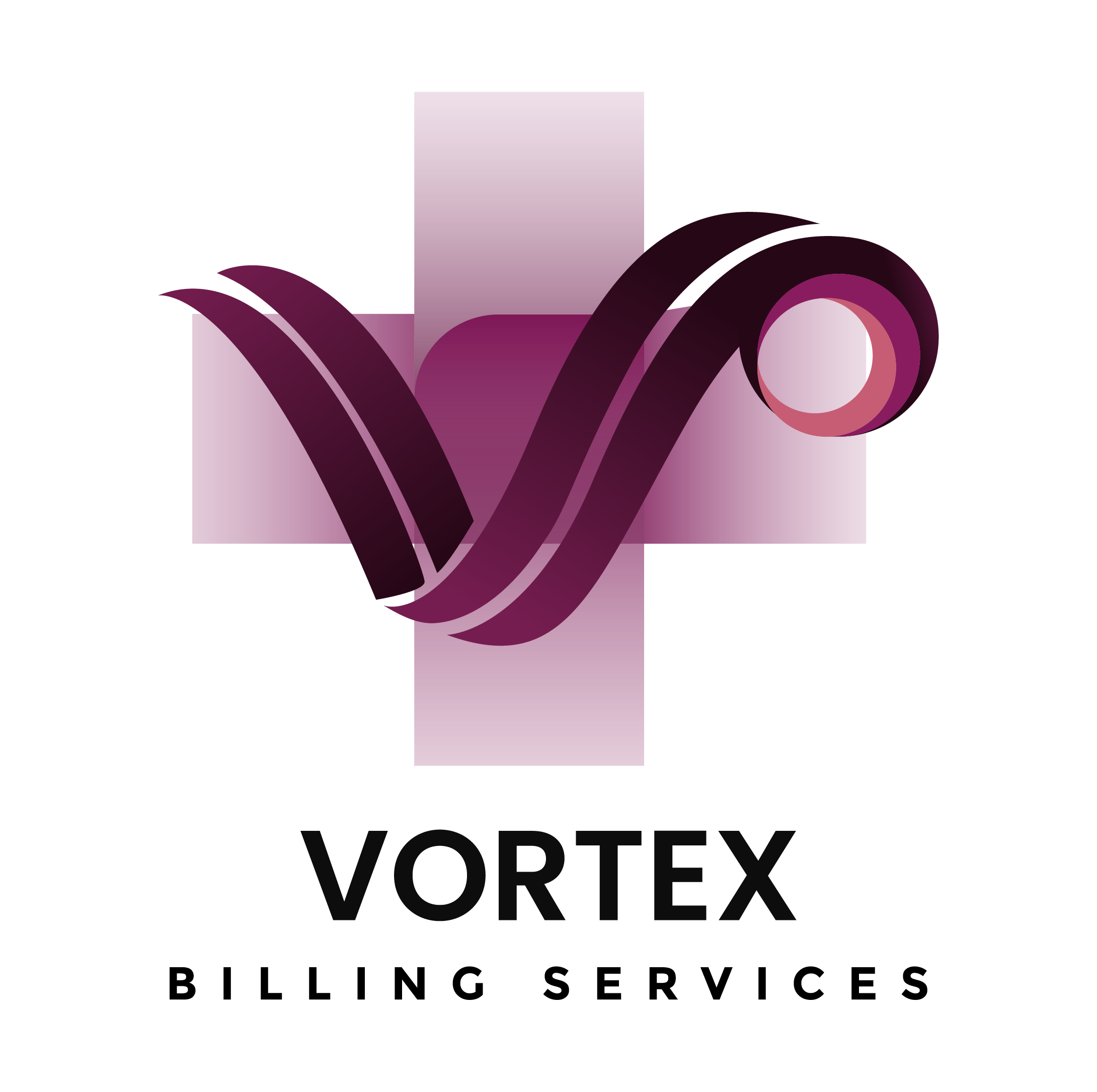Navigating the Complexities of RCM Billing: A Checklist for Medical Practices
Navigating the complexities of RCM Billing (Revenue Cycle Management) is one of the most critical responsibilities for medical practices and clinics across the USA. Without a well-organized process, healthcare providers risk delayed payments, denied claims, and serious compliance issues. This Revenue Cycle Management Checklist for Medical Practices is designed to help you streamline your billing workflow, reduce errors, ensure compliance, and improve cash flow efficiency.
RCM Billing isn’t just about sending invoices—it’s a holistic process that starts the moment a patient schedules an appointment and continues until the balance is paid in full. If you’re a clinic or healthcare organization struggling with revenue leakages, or if you’re setting up a new practice, following a detailed RCM checklist will dramatically improve your operational and financial health. So, what exactly needs to be on that checklist? Let’s dive in.
Introduction to RCM Billing
What is RCM Billing?
RCM Billing, short for Revenue Cycle Management Billing, refers to the end-to-end process that medical practices use to manage the administrative and clinical functions associated with claims processing, payment, and revenue generation. It’s the backbone of your practice’s financial health and involves tasks such as patient registration, insurance verification, coding, billing, collections, and reporting.
In simpler terms, think of RCM Billing as the cash register of your clinic—but instead of a single transaction, it’s a chain of complex, interconnected events that must all be accurate and timely. Errors at any point in the chain can delay payments or even lead to lost revenue entirely.
For modern medical practices, especially those operating in a tech-driven environment or dealing with complex payer structures like Medicare, Medicaid, and private insurers, RCM Billing must be both agile and accurate. This means automating parts of the process, training staff, using proper coding systems, and maintaining strong compliance standards.
Every touchpoint with a patient—from the first call to schedule an appointment to the final payment reminder—must be documented, coded, and tracked. With increasing patient responsibility due to high-deductible plans, the margin for error in RCM Billing has become razor-thin. That’s why having a checklist is essential.
Why is RCM Critical for Healthcare Providers in the USA?
In the highly regulated and insurance-dependent U.S. healthcare system, failing to master RCM Billing is a fast track to cash flow issues and even practice closure. With billing regulations evolving constantly, payers demanding more transparency, and patients shouldering more of their healthcare costs, practices need airtight processes to stay afloat and profitable.
Here are some compelling reasons why RCM Billing should be at the top of your practice’s priorities:
- Compliance Matters: Errors in billing can lead to audits, penalties, and legal issues under laws like HIPAA and the False Claims Act.
- Cash Flow Efficiency: Accurate billing leads to faster reimbursements. This directly affects your bottom line.
- Denial Reduction: A solid RCM system reduces claim denials by catching mistakes before submission.
- Patient Satisfaction: Clear, accurate billing increases trust and improves the overall patient experience.
- Operational Clarity: With proper RCM workflows, practices can better manage staff responsibilities and measure financial performance with real-time KPIs.
In short, efficient RCM Billing isn’t optional; it’s a competitive necessity, especially in a crowded market where margins are thin and operational transparency is key.
Understanding the RCM Lifecycle
Pre-Registration and Insurance Verification
The revenue cycle starts before the patient even sets foot in the office. Pre-registration includes collecting demographic information, verifying insurance coverage, and ensuring accurate contact details. This is a foundational step in your RCM Billing checklist.
Without insurance verification, you run the risk of providing care to patients whose plans don’t cover certain procedures—or worse, who are no longer covered at all. That leads to claim denials and unexpected bills for patients, which is a recipe for dissatisfaction and non-payment.
Best Practices for Pre-Registration:
- Use electronic tools to verify insurance instantly.
- Collect complete patient data, including policy numbers and group IDs.
- Schedule periodic staff training to ensure they’re up to date on payer requirements.
- Confirm the patient’s co-pay and deductible status ahead of time.
- Implement scripts or checklists for your front desk to standardize the intake process.
This step, when done correctly, ensures that the rest of the billing process flows smoothly. It also reduces the time spent reworking claims and chasing down missing information.
Patient Eligibility Checks and Benefits Coordination
Once a patient is pre-registered, the next crucial step is eligibility checks and benefits coordination. Don’t confuse this with basic insurance verification—this is about knowing what services are covered, under what conditions, and what the patient’s out-of-pocket costs will be.
RCM Billing can be derailed quickly if a provider performs a service thinking it’s covered, only to discover post-treatment that the service wasn’t eligible under the patient’s plan. This leads to payment delays, patient frustration, and increased administrative workload.
Key Eligibility & Benefits Tasks Include:
- Checking service-specific coverage (e.g., diagnostic tests, physical therapy).
- Understanding prior authorization needs.
- Communicating clearly with patients about their benefits and financial responsibilities.
- Documenting everything in your practice management software.
This step empowers practices to have informed conversations with patients, manage expectations, and reduce the risk of unpaid balances due to insurance confusion.
Front-End Processes in RCM Billing
Appointment Scheduling with Billing in Mind
Appointment scheduling may seem purely administrative, but in the context of RCM Billing, it plays a pivotal role. How your staff schedules appointments can directly affect coding, claims submission, and reimbursement timelines. Aligning scheduling with RCM best practices sets the tone for a smooth billing process.
Why? Because appointment types often determine billing codes, pre-authorization needs, and even time constraints for claims submissions. A misstep in scheduling can mean services get rendered without coverage, leading to rejected claims or delayed payments.
Key RCM-Oriented Scheduling Practices:
- Use procedure-specific scheduling templates: Match appointment types with proper billing codes and time allocations.
- Pre-schedule authorizations: If a service needs prior approval, ensure the time required for obtaining it is factored into scheduling.
- Double-check insurance data: Validate insurance coverage and active benefits during scheduling to avoid last-minute surprises.
- Flag high-risk services: If a procedure is often denied or partially covered, notify both staff and patients in advance.
Integrating billing knowledge into your scheduling software and staff training can prevent significant downstream issues in the revenue cycle. This proactive approach also reduces no-shows and late cancellations by involving patients in their financial responsibilities upfront.
Collecting Co-Pays and Patient Financial Responsibility
An often-overlooked aspect of RCM Billing is collecting the patient’s portion of payment before the service is rendered. In today’s healthcare climate—especially in the USA—patients are responsible for a growing percentage of their medical costs due to high-deductible plans. If you’re not collecting co-pays and known out-of-pocket costs at the time of service, you’re putting your practice’s financial health at risk.
Collecting payments post-visit is often a losing battle. Patients forget, bills go unanswered, or they simply can’t pay later. The time and effort to chase these payments cost your practice even more in administrative overhead.
Best Practices to Maximize Front-End Collections:
- Train staff to communicate clearly and empathetically about costs and financial expectations.
- Use point-of-service collection tools—credit card on file options, mobile payment apps, etc.
- Provide cost estimates based on insurance verification to empower patient decision-making.
- Offer flexible payment plans for larger balances.
- Use signage and scripts to normalize up-front payments as a routine part of the care experience.
Making upfront collections a consistent policy reduces bad debt and improves revenue predictability. It also sets the expectation that receiving care includes a financial obligation—something that benefits both provider and patient in the long term.
Pre-Authorization Management and Real-Time Updates
If you’ve ever had a claim denied due to lack of pre-authorization, you understand how critical this step is to RCM Billing. Pre-authorization (or prior authorization) is the payer’s way of saying, “Yes, we agree to pay for this treatment—but only if you ask nicely first.” It’s an essential compliance step and a key chokepoint in the billing cycle.
In many cases, a single missed pre-author can cost hundreds, even thousands, in lost revenue. More importantly, it introduces legal risk if services are rendered without required payer approval.
How to Nail Pre-Authorization Management:
- Maintain a payer-specific pre-author checklist and update it regularly.
- Use automated tools or software integrations to alert staff when a pre-author is needed.
- Assign pre-author responsibilities to specific team members to reduce oversights.
- Track turnaround times and follow up proactively if an approval is delayed.
- Document authorization numbers in both the EHR and billing system to streamline claim submission.
Modern RCM technology allows for real-time eligibility and pre-author verification. Practices that embrace these tools see fewer denials and much faster turnaround on reimbursements. Consider this step your firewall—it protects your revenue from being swallowed by bureaucratic red tape.
Mid-Cycle Revenue Management
Coding, Documentation, and Claim Generation
Now we enter the heart of RCM Billing—where clinical documentation meets financial operations. Coding and documentation are the bridges between what happens in the exam room and what ends up in the billing system. If this bridge is shaky, your claims will crumble.
Accurate and compliant coding isn’t just about maximizing reimbursement—it’s about staying out of legal trouble and avoiding payer audits. Coding errors or upcoding (intentionally or unintentionally) can trigger fraud investigations and lead to major fines.
Key Elements of Effective Coding in RCM:
- Thorough clinical documentation: Providers must chart accurately to support every CPT and ICD-10 code billed.
- Regular audits: Conduct internal or third-party coding reviews to catch mistakes.
- Coder-provider communication: Ensure open dialogue between clinicians and coding staff to clarify gray areas.
- Use code scrubbing tools: These automatically check for missing modifiers, incompatible codes, or outdated formats.
- Stay updated: Coding guidelines change regularly—especially with CMS. Ongoing education is essential.
Claim generation follows coding and should be automated as much as possible. Clean claims—those that go out error-free the first time—result in faster payments and less administrative overhead. An optimized mid-cycle workflow dramatically improves claim turnaround and reduces reliance on appeals and resubmissions.
Compliance with ICD-10, CPT, and CMS Guidelines
Coding alone isn’t enough—you need compliance. Every code you use in RCM Billing must adhere to the latest standards set by CMS (Centers for Medicare & Medicaid Services) and other regulatory bodies. Otherwise, you’re not just risking denied claims—you’re exposing your practice to potential legal penalties.
Key Compliance Guidelines for RCM Success:
- ICD-10: Used for diagnosis coding. It must be precise and reflect the patient’s condition accurately.
- CPT/HCPCS: These describe the procedures and services provided. Incorrect usage can result in underpayment or overpayment.
- Modifier usage: Modifiers clarify the services rendered and impact reimbursement. Misuse often triggers denials.
- Local Coverage Determinations (LCDs): CMS-specific rules for what services are covered and under what circumstances.
- E&M Coding: Evaluation and Management codes must reflect documentation. These are commonly audited and scrutinized.
The stakes are high. CMS, commercial payers, and regulatory agencies can audit at any time. By staying on top of these compliance factors, you protect both your revenue and your reputation.
Back-End Processes in RCM Billing
Claims Submission and Payer Follow-Up
Once a clean claim is generated, the next stage in the RCM Billing cycle is submission. But don’t be fooled—just sending the claim isn’t enough. The real challenge lies in ensuring the claim gets processed, reimbursed, and followed up on if necessary.
In a perfect world, claims would be submitted and paid within 30 days. In reality, many are delayed due to missing data, coding discrepancies, or payer policies. Efficient claims follow-up procedures can prevent revenue from slipping through the cracks.
Best Practices for Claims Submission and Follow-Up:
- Submit electronically: It speeds up processing and reduces paperwork.
- Track claim status: Use billing software or clearinghouses that allow real-time tracking.
- Follow up on unpaid claims weekly: Don’t wait until 60 days post-submission.
- Use standardized denial codes: This helps categorize and prioritize follow-ups.
- Maintain payer contact logs: Document every interaction for accountability and escalation if needed.
A tight follow-up loop shortens the revenue cycle and improves cash flow. Every day a claim goes unpaid is money your practice doesn’t have.
Denial Management and Appeals Process
Even the best RCM Billing systems face claim denials. What separates thriving practices from struggling ones is how they handle those denials. A strong denial management process is about more than just re-submitting claims—it’s about identifying root causes and preventing future rejections.
Denials typically occur due to missing documentation, incorrect coding, eligibility issues, or authorization lapses. If these aren’t addressed swiftly and thoroughly, they snowball—leaving your practice with mounting unpaid claims and frustrated patients.
Strategies for Effective Denial Management:
- Analyze trends: Identify common denial reasons by payer or procedure.
- Act fast: Appeals have submission deadlines. Missing them means lost revenue.
- Create a workflow: Assign denial categories to specific team members for quicker resolution.
- Maintain documentation: Keep thorough notes and communications for each appeal.
- Invest in training: Ongoing education reduces coding and documentation errors.
Successful denial management not only recovers lost income but also strengthens your overall RCM process. Each denial is a data point—learn from it to improve upstream processes like pre-author, coding, or insurance verification.
Posting Payments and Reconciling Accounts
After reimbursements and patient payments are received, they must be accurately posted into your practice management system. This is where revenue turns into real, trackable income—and it’s a critical step in your RCM Billing checklist.
Incorrect payment posting leads to a chain of issues: inaccurate patient balances, faulty financial reporting, and missed collection opportunities. It also confuses patients when they receive incorrect statements, reducing trust and compliance.
Best Practices for Payment Posting:
- Automate where possible: Use ERA (Electronic Remittance Advice) to auto-post payer payments.
- Reconcile daily: Match bank deposits to EOBs (Explanation of Benefits) and ERAs daily to detect discrepancies early.
- Flag underpayments: Use contract management tools to identify when payers aren’t reimbursing as agreed.
- Communicate with patients: Provide accurate and timely statements that reflect insurance payments and balances due.
- Audit regularly: Check for unapplied payments, misallocated funds, or aged balances that need follow-up.
The goal is to have a clean ledger that reflects real-time payment status. This helps you make better financial decisions, avoid aging receivables, and maintain financial health in your practice.
Performance Monitoring and KPI Tracking
You can’t improve what you don’t measure. Tracking key performance indicators (KPIs) is vital to optimizing your RCM Billing process. Monitoring financial health through data allows your team to identify bottlenecks, track progress, and ensure long-term sustainability.
Essential RCM KPIs to Track:
- Days in A/R (Accounts Receivable): Ideally under 30 days. Longer cycles signal inefficiencies.
- Clean claim rate: Aim for 95%+ of claims going out error-free.
- Denial rate: Keep under 5%; high rates point to systemic issues.
- Net collection rate: Shows how much of your potential revenue you’re actually collecting.
- Patient collection rate: Important as patients now cover more healthcare costs.
Dashboard Tips:
- Use visual analytics: Bar graphs, trend lines, and pie charts help interpret performance quickly.
- Set benchmarks: Compare your KPIs against national averages or past performance.
- Meet weekly: Schedule regular reviews with your billing team to discuss trends, wins, and red flags.
Data isn’t just for administrators—it’s a tool for every team member. When staff understands how their role impacts KPIs, accountability and performance improve across the board.
Role of Technology in RCM
Benefits of Automation in Medical Billing
In the digital age, technology is not just a support tool—it’s a strategic asset in RCM Billing. Automation significantly reduces human error, cuts processing time, and ensures better compliance. From scheduling and eligibility checks to claim scrubbing and patient statements, automation streamlines every stage of the billing cycle.
Advantages of Automation in RCM:
- Faster claims processing: Tools like EHR integrations and clearinghouses enable near-instant submissions.
- Lower denial rates: Automated checks catch common coding and documentation errors before submission.
- Improved patient communication: Systems can send reminders, estimates, and e-statements without staff involvement.
- 24/7 revenue tracking: Cloud-based dashboards let you track performance anytime, anywhere.
- Less administrative overhead: Automation frees up your staff to focus on complex cases, not routine tasks.
Adopting automation isn’t just about speed—it’s about accuracy and compliance too. Practices that embrace tech-forward RCM solutions gain a major edge in both patient experience and revenue retention.
Choosing the Right RCM Software
Not all billing software is created equal. Choosing the right RCM platform depends on the size of your practice, your specialty, your in-house capabilities, and your growth plans. A good system should be scalable, user-friendly, and fully compliant with healthcare regulations.
What to Look for in RCM Software:
- EHR integration: Seamless data flow between clinical and billing systems.
- Claims scrubbing tools: Auto-check claims before submission.
- Custom reporting: Generate insights into KPIs, payer performance, and trends.
- Patient engagement features: Payment portals, cost estimates, mobile reminders.
- Vendor support and training: Ensure your staff can maximize the system’s potential.
The right software acts as a partner in your billing process—not just a tool. Look for platforms that are updated regularly, compliant with federal and state regulations, and offer ongoing support. Practices that use tech-savvy RCM systems often report fewer errors, faster reimbursements, and stronger bottom lines.
Compliance and Legal Considerations
HIPAA, HITECH, and Billing Standards
Compliance is more than a buzzword in RCM Billing—it’s the shield that protects your practice from audits, lawsuits, and severe financial penalties. U.S. healthcare providers must follow strict guidelines, including HIPAA, HITECH, and various CMS rules, all of which influence how you handle billing, coding, and patient information.
Key Legal Frameworks to Understand:
- HIPAA (Health Insurance Portability and Accountability Act): Governs how patient data is stored, shared, and protected. Violations can result in hefty fines.
- HITECH (Health Information Technology for Economic and Clinical Health Act): Expands HIPAA enforcement, especially regarding electronic records.
- CMS Guidelines: From Medicare billing rules to E/M coding updates, these regulations change frequently.
- False Claims Act: Billing errors—intentional or not—can trigger legal action if seen as fraudulent.
Compliance Best Practices:
- Implement internal audits and regular coding reviews.
- Use access controls and encryption for billing and patient data.
- Train staff on HIPAA and billing protocols annually.
- Document everything—from pre-author requests to appeals—to create a paper trail.
Don’t let a simple oversight turn into a federal investigation. Making compliance an integral part of your RCM Billing workflow ensures peace of mind and long-term viability.
Outsourcing vs. In-House RCM Billing
Pros and Cons for Small and Large Practices
Every medical practice reaches a crossroads: should you manage RCM Billing internally or outsource it to a professional service? The answer depends on your size, specialty, resources, and growth strategy.
In-House Billing Pros:
- Greater control over processes
- Easier communication between providers and billing staff
- Customization of workflows
In-House Billing Cons:
- High labor costs
- Limited scalability
- Requires ongoing training and oversight
Outsourced RCM Pros:
- Access to experienced billing professionals
- Predictable costs and transparent pricing
- Advanced technology and compliance safeguards
Outsourced RCM Cons:
- Less direct oversight
- Potential vendor reliability issues
- Need for strong contract management
Key Considerations:
- Small practices often benefit from outsourcing due to limited staff and infrastructure.
- Larger practices may prefer a hybrid model or keep billing in-house with tech support.
- Tech-driven practices can maximize returns with automation and a lean internal team.
The key is to evaluate your practice’s pain points, capabilities, and future plans. Whether you outsource or not, the focus should always be on efficiency, compliance, and patient satisfaction.
Building an RCM-Ready Team
Training Administrative Staff
Your RCM Billing system is only as strong as the people behind it. Even the best software and workflows can fail if your front-desk, billing, and coding teams aren’t properly trained. Investing in staff education creates consistency, reduces errors, and empowers your team to take ownership of their part in the revenue cycle.
Key Training Areas:
- Patient intake and eligibility verification
- Insurance navigation and benefit coordination
- Coding and documentation accuracy
- HIPAA compliance and security protocols
- Using EHR and billing platforms efficiently
How to Build an RCM Culture:
- Hold quarterly workshops or lunch-and-learns.
- Use case studies from actual claim denials to teach lessons.
- Reward staff for meeting KPI goals.
- Provide clear roles and expectations for everyone involved in billing.
Building an RCM-ready team doesn’t happen overnight. But the practices that prioritize it outperform those that rely only on systems and tools. Human expertise is what turns good processes into great revenue results.
Checklist for Streamlining RCM Billing
Step-by-Step RCM Billing Workflow
Let’s tie it all together with a practical, easy-to-follow RCM Billing checklist for your medical practice. Use this as a daily, weekly, and monthly guide to keep your revenue cycle healthy.
Daily Tasks:
- Verify insurance for upcoming appointments
- Collect co-pays and patient balances at check-in
- Submit claims for previous day’s visits
- Post payments and reconcile deposits
Weekly Tasks:
- Review claim denials and initiate appeals
- Audit coding accuracy
- Monitor KPI trends (e.g., clean claim rate, A/R aging)
Monthly Tasks:
- Run financial reports and compare against goals
- Hold billing team meetings to address challenges
- Update insurance payer rules and pre-author requirements
- Review outstanding balances and patient collections
Quarterly Tasks:
- Conduct compliance audits
- Review RCM software performance and updates
- Provide staff training or refreshers
- Evaluate outsourcing/vendor options if needed
A detailed checklist is not just a time management tool—it’s a strategic roadmap to keep your billing cycle lean, accurate, and compliant.
Future Trends in RCM Billing
AI, Machine Learning, and Predictive Analytics
The future of RCM Billing is driven by technology—and we’re already seeing massive shifts toward AI-powered automation, predictive analytics, and machine learning. These innovations aren’t just buzzwords—they’re transforming how practices optimize revenue and serve patients.
Emerging Technologies to Watch:
- AI coding assistants that improve accuracy and speed
- Predictive analytics that forecast denials before submission
- Voice-to-text tools for real-time documentation and coding
- Bots for pre-author, eligibility checks, and payment posting
These tools save time, reduce errors, and give practices the ability to scale without a proportional increase in staff. The goal? Predict problems before they happen and automate everything that doesn’t require a human touch.
Patient Engagement and Self-Service Portals
Patient expectations are evolving. They want the same digital convenience in healthcare that they experience in online banking or shopping. Self-service tools—like payment portals, mobile reminders, and digital estimates—are becoming central to modern RCM strategies.
Benefits of Patient-Focused RCM Tools:
- Faster payments through convenient online options
- Reduced no-shows via SMS and email reminders
- Improved satisfaction through transparency
- Fewer billing inquiries when estimates are provided upfront
Practices that embrace these tools create a smoother experience for both patients and staff—and improve their financial outcomes in the process.
Conclusion
Mastering RCM Billing is no longer optional for medical practices in the U.S.—it’s essential. With increasing complexity in insurance, patient responsibility, and regulatory compliance, a comprehensive Revenue Cycle Management checklist is your blueprint for financial stability and operational excellence.
From the moment a patient schedules an appointment to the final payment posted, every step in the RCM journey matters. Whether you’re a solo provider or a growing multi-site clinic, focusing on the right processes, the right team, and the right technology will keep your revenue flowing and your compliance solid.
Remember, every dollar lost in the billing process is a dollar that could’ve funded better care, more staff, or the next step in your practice’s growth. So start optimizing today—and turn your RCM from a back-office burden into a competitive advantage.



